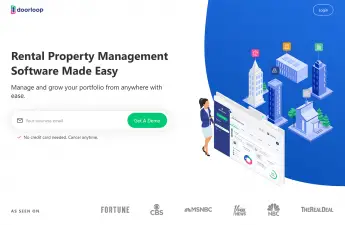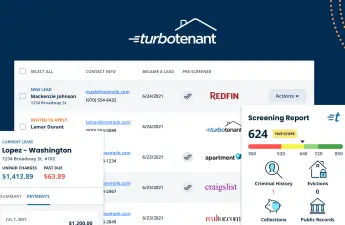With a rental vacancy rate of 6.6% (as of September 2023), landlords often struggle with reducing vacancy periods to protect their cash flow. Empty rental properties mean lost income and increased costs, posing a financial challenge for landlords.
This article explores the common issues landlords face with vacant properties and answers an important question: What is a good vacancy rate for rental property? We’ll also provide straightforward landlord tips and advice and discuss the importance of having a practical tenant screening checklist. By focusing on simple yet effective strategies, landlords can minimize vacancy periods and optimize their rental property’s cash flow.
Importance of Optimizing Cash Flow
Optimizing cash flow is crucial as it underpins financial stability, enabling them to meet expenses and generate profits consistently. A well-managed cash flow ensures that landlords can cover mortgage payments, maintenance costs, and other operational expenses, safeguarding their investments against unforeseen challenges.
This financial stability not only provides a buffer during periods of vacancy but also empowers landlords to make strategic decisions, such as property improvements or expanding their real estate portfolio.
Understanding Vacancy Rates
The vacancy rate is the percentage of unoccupied rental units. It’s a key metric for landlords, helping them fine-tune their strategies to attract and retain tenants and ultimately foster a stable and profitable rental property portfolio.
Achieving and sustaining an optimal vacancy rate is vital for landlords, as it signifies effective property management.
Factors Influencing Vacancy Rates
High vacancy rates are influenced by several critical factors that landlords must carefully navigate. These include:
- Location – Areas with limited demand or unfavorable market conditions may experience prolonged vacancies.
- Pricing – Rental rates that are either too high or too low can dissuade potential tenants.
- Maintenance – Inadequate property maintenance negatively affects a property’s appeal, deterring prospective renters and increasing vacancy periods.

Strategies to Reduce Vacancy Periods
Landlords can employ strategic measures to quickly attract tenants and minimize vacancy periods.
- Implementing an effective marketing strategy is vital. Leveraging online platforms, social media, and traditional advertising channels can significantly enhance property visibility.
- Competitive pricing is equally crucial, as it not only attracts potential tenants but also ensures a rapid turnover between occupants.
- Having a tenant screening checklist helps landlords identify and secure reliable tenants that are more likely to fulfill lease agreements, make timely rent payments, and maintain the property responsibly.
- Making targeted property enhancements can enhance the overall appeal, making it more enticing for prospective renters.
By combining these strategies, landlords can create a compelling value proposition that expedites tenant acquisition, ultimately reducing vacancy periods and fostering a more dynamic and profitable rental property portfolio.
Setting the Right Rental Rates
Setting appropriate rental rates establishes a delicate balance between attracting tenants and maximizing income. Properly priced rentals are more likely to attract a steady stream of potential tenants, minimizing vacancy periods and ensuring consistent cash flow.
If rental rates are set too high, it may deter prospective tenants and lead to prolonged vacancies. On the other hand, setting rates too low can jeopardize a landlord’s ability to cover operational expenses and generate a desirable return on investment.
Striking the right balance through exhaustive market research ensures that rental properties remain competitive, and appealing to tenants while optimizing the landlord’s overall financial stability and profitability.
Enhancing Property Appeal
Landlords can enhance the appeal of their properties by implementing several key strategies. First and foremost, improving curb appeal is crucial. A well-maintained exterior creates a positive first impression and entices potential tenants.
Conducting necessary repairs promptly is equally important, addressing any issues that may deter renters and ensuring the property is in optimal condition. Additionally, offering amenities, whether it’s updated appliances, modern fixtures, or convenient parking spaces, can significantly increase the attractiveness of a rental property.
By investing in these enhancements, landlords not only make their properties more appealing to potential tenants but also differentiate themselves in a competitive market, ultimately reducing vacancy periods and fostering tenant satisfaction.
Effective Marketing Strategies
To minimize vacancy periods, landlords can use effective marketing strategies that capture the attention of potential tenants.
- Leveraging online platforms is essential in today’s digital age. Listing properties on reputable websites broadens visibility and attracts a larger audience.
- Utilizing professional photos showcases the property in its best light, making a strong visual impact that encourages inquiries.
- Highlighting unique property features, whether it’s a spacious backyard or modern amenities, sets the rental apart and creates a compelling value proposition.
By incorporating these tactics into their marketing efforts, landlords can effectively reach and engage with prospective tenants, ultimately reducing vacancy periods and ensuring a consistent flow of occupancy for their rental properties.
Tenant Retention Strategies
Landlords can utilize effective tenant retention strategies to minimize turnover and foster long-term occupancy.
- Providing excellent customer service is important. Responsive communication, addressing concerns promptly, and maintaining a positive landlord-tenant relationship contribute significantly to tenant satisfaction.
- Proactively addressing maintenance issues and making timely repairs further enhances the tenant’s living experience, encouraging them to stay.
- Offering incentives like lease renewals at a fixed rate or periodic property upgrades can incentivize tenants to extend their stay.
By prioritizing tenant needs, maintaining open communication, and creating a positive living environment, landlords can cultivate loyalty and reduce turnover, ensuring a stable and enduring rental relationship.
Addressing Tenant Concerns
To address tenant concerns and improve retention, landlords can take practical steps.
- Open communication: Creating an environment where tenants feel comfortable expressing their concerns facilitates a positive landlord-tenant relationship.
- Timely maintenance: Addressing repair requests promptly demonstrates a commitment to the tenant’s well-being and satisfaction.
Additionally, landlords can go beyond reactive measures by addressing potential issues proactively, such as conducting regular property inspections to identify and resolve issues before they escalate.
By prioritizing open communication, prompt maintenance, and proactive issue resolution, landlords can enhance tenant satisfaction, strengthen the overall landlord-tenant relationship, and contribute to a more stable and enduring tenancy.
Monitoring and Adjusting Strategies
Continuous monitoring and adjustment of strategies are imperative for landlords due to the dynamic nature of real estate markets and evolving tenant preferences. The landscape of the rental market is subject to fluctuations influenced by economic conditions, local demographics, and broader societal trends. Staying attuned to these changes allows landlords to adapt their approaches effectively, ensuring that their properties remain competitive and attractive to potential tenants.
Furthermore, tenant preferences can shift over time, prompting the need for adjustments in property management strategies. By staying proactive and responsive to these changes, landlords can optimize their rental operations, reduce vacancy periods, and enhance overall tenant satisfaction.
Landlord Gurus Takeaway
Landlords aiming to reduce vacancy periods and optimize cash flow should prioritize several key strategies. Firstly, implementing strategic marketing, especially through online platforms and professional visuals, is crucial for attracting tenants quickly. Setting appropriate rental rates, ensuring a balance between competitiveness and profitability, is fundamental to minimizing vacancies. Additionally, prioritizing tenant satisfaction through excellent customer service, prompt issue resolution, and proactive maintenance is essential for retaining tenants and reducing turnover.
By integrating these approaches, landlords can foster a thriving rental business, creating a harmonious balance between attracting new tenants and ensuring the satisfaction of existing ones. These strategies collectively contribute to a resilient and profitable rental property portfolio in the ever-evolving real estate landscape.
Bonus Tip
What is a good vacancy rate for rental property? While a vacancy rate typically varies based on market conditions and property types, anything below 5% is good. This benchmark strikes a balance between maintaining consistent cash flow and allowing for necessary downtime between tenants.
Disclosure: Some of the links in this post are affiliate links and Landlord Gurus may earn a commission. Our mission remains to provide valuable resources and information that helps landlords manage their rental properties efficiently and profitably. We link to these companies and their products because of their quality, not because of the commission.




